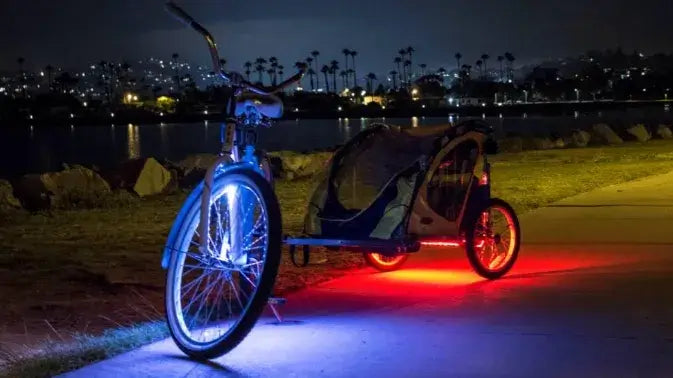
Biking at Night: What to Know When Riding a Bicycle After Dark
The Magic and Risks When Riding a Bicycle at Night
Riding a bicycle at night has a special calm feeling. The busy streets become quiet paths, the air gets cooler, and the city shows a completely different side. Many people feel worried about riding after dark though. Not being able to see well and drivers not seeing you are real problems that matter. This guide will help you deal with those worries directly and give you everything you need to stay safe.
These safety tips are based on practical experience from real-world cyclists and feedback from nighttime riding communities. By combining expert guidance with lived experience, this guide offers advice that’s both trustworthy and easy to follow. We want to give you a complete plan for safety. This includes the gear you must have, what the law says you need, and smart ways to stay aware of what's around you. By the end, you'll know how to ride at night safely and actually enjoy it. We'll talk about the equipment you can't ride without, ways to make sure people see you, and expert tips for handling the special challenges that come with riding in the dark.
Your Must-Have Gear When Riding a Bicycle at Night
When riding a bicycle at night, you should always start with the right equipment. It’s not about fancy gear—it’s about smart choices that keep you safe and visible. This isn't about buying expensive things - it's about having basic gear that keeps you safe and follows the law. Think of this gear as your ticket to ride after the sun goes down.
Lights: More Than Just a Good Idea
Your lights are the most important safety equipment for night riding without any doubt. They do two big jobs: help you see where you're going and make sure other people see you. Most places have specific laws about bicycle lights that you must follow. The Washington State Department of Transportation says that legal requirements often mandate a white headlight and a red rear reflector. Similar regulations are enforced across many states, and understanding your local bike laws is an important first step toward safe riding. A reflector is good, but we strongly suggest getting an active red taillight that actually shines light instead.
Smart Lighting Upgrades
Some newer bike lights can adjust brightness automatically based on your surroundings—dim in bright areas, and brighten up on dark roads. Others even flash brighter when you brake or slow down, giving drivers an extra clue. While not required, these upgrades can give you an edge in staying visible and safe at night.
An active light makes drivers able to see you from much farther away. The law is just the minimum - your safety depends on doing more than what's required.
How Bright Should Your Lights Be?
When you shop for lights, you'll see "lumens" (lm), which just means how bright something is. The right number of lumens depends completely on where you ride. A super bright light isn't needed and can actually bother other people in a well-lit city, while a dim light is dangerously weak on a dark trail. Use this table to help you pick the right brightness for riding a bicycle at night.
| Environment | Front Light Lumens | Rear Light | Primary Purpose |
|---|
| Well-lit Urban Streets | 100–400 lm | 20–50 lm | To Be Seen |
| Suburban Roads | 400–800 lm | 30–80 lm | To See and Be Seen |
| Unlit Trails/Rural Roads | 800+ lm | 50–100 lm | To Illuminate the Path |
For your back light, 20 to 100 lumens works well for all conditions since its main job is to be seen, not to light up the road.
Reflectors and Reflective Clothing
Active lights are your main protection, but reflectors and reflective gear act as a backup safety system. This system works without batteries by catching light from car headlights and bouncing it back. The trick is putting them in the right places to show the shape and movement of a cyclist.
Focus on these key areas:
- Pedals and Ankles: The constant moving motion here really grabs a driver's attention
- Tires and Rims: Many tires have reflective sides that create a big, visible spinning circle
- Frame: Reflective tape on your bike frame helps show your bicycle's outline
- Clothing: Jackets, vests, and helmet covers with reflective panels make you much bigger and easier to see
Does Bike Color Matter at Night?
While not as critical as lights or reflectors, a bike frame in white, bright yellow, or neon green adds passive visibility. Matte black bikes may look sleek but blend into the dark. Even adding colorful decals or reflective stickers can make your frame easier to spot.
Why Backup Lights Matter
Having a second set of lights can be a real ride-saver. Batteries die, mounts break, and unexpected bumps can knock a light loose. A small backup light clipped to your bag or helmet ensures you’re not left in the dark if your main light fails. It’s a simple way to add peace of mind to your night ride.
A small whistle or a light that flashes SOS can help you call for help if something goes wrong. Some taillights come with emergency flash modes. It's a feature you’ll hopefully never need—but it’s smart to have just in case.
3 Visibility Levels When Riding a Bicycle at Night
As a cyclist at night, having the right gear is just the first step. Next, you need to know how to use it as part of a complete plan to be visible. We break this down into three simple levels that build on each other, taking you from barely legal to impossible to miss on the road. So What You Should Always Do to Be Seen at Night?
Level 1: Follow the Law
This is where you start. It means you have at least the legally required front light and rear reflector (or better yet, a rear light) turned on and working right. This level meets the law and gives you the most basic protection possible. Not meeting this standard puts you in huge danger and can cause legal and insurance problems if something bad happens.
Check your equipment meets this basic level before every night ride.
Level 2: How to Make Yourself Seen at Night
Following the law isn't the same as being safe. Level 2 goes beyond the minimum to make sure you stand out against everything else at night. This includes several important parts:
Light Settings: Use a flashing mode for your rear light in the city to cut through all the visual noise and get attention. For your front light, a steady beam often works better in darker areas because it helps drivers judge how far away you are and how fast you're going, plus it helps you see the road clearly.
What You Wear: Dark clothes at night make you almost invisible. Wearing bright or fluorescent clothes is a good way to stand out. White, yellow, and lime green show up best in low light.
Moving Reflectors: This is a really important idea that most people don't know about. The human brain is incredibly good at recognizing human movement patterns. When you put reflective materials on your ankles, shoes, and knees, you use this natural ability. The up-and-down pedaling motion is a uniquely human pattern that a driver's brain will notice much faster than a still reflector on a bike frame.
Level 3: Be Easy to Predict
This is the highest level of visibility and shows you're an expert rider. Being predictable means people don't just see you, but they also understand what you're going to do. It's about clearly telling everyone else on the road what you plan to do so they can expect your actions.
Where You Ride: Don't ride right next to the curb. Riding too far right can make you less visible at intersections and leaves you no room to move around dangers. Take a confident position in the lane when it makes sense.
This makes you more visible in mirrors and stops drivers from trying to squeeze past you unsafely.
Clear Hand Signals: Your hand signals need to be more obvious at night. Signal earlier than you would during the day and hold the signal longer to make sure people see it.
Eye Contact: Even in the dark, try to make eye contact with drivers at intersections, especially those waiting to turn. A look at their face or a nod can help make sure they've seen you before you go.
Remember, when riding a bicycle at night, you should always follow these three visibility levels to stay legal, stand out, and ride with confidence.
Expert Skills for When Riding a Bicycle at Night
With the right gear and visibility plan, you're ready to learn the more advanced skills of night riding. The challenges are different after sunset and require better awareness and specific techniques to handle them. Experienced cyclists know that nighttime cycling requires extra precautions, but these skills can make it just as safe as riding during the day.
Use Your Ears
When you can't see as well, your hearing becomes incredibly valuable. The quiet of night lets you pick up on subtle sounds you'd miss during the day. You can learn to tell the difference between the sound of a car coming from behind, how fast it's going, and even what type of vehicle it is by the tire noise on the road.
Listen for engine sounds at intersections before you see headlights. Be especially careful about what you can't hear - modern electric and hybrid cars can be almost silent at low speeds. Never rely only on hearing, but use it as another way to understand what's happening on the road around you.
Slow Down for Safety
Even with good lights, your reaction time is shorter at night. Things look closer, shadows shift quickly, and obstacles pop up fast. Riding at a slower pace gives you more time to spot trouble and stay in control. This isn’t the time to break speed records—it’s about riding smooth and smart.
Understanding What You See on the Road
Your front light doesn't just make you visible - it's your tool for reading the road surface. You need to learn how light and shadow work on the pavement to spot dangers before you reach them.
Holes and Cracks: Look for breaks or rough spots in the smooth reflection of your light on the road. A sudden dark spot or sharp shadow line often means there's a hole or crack.
Slippery Surfaces: Wet leaves, sewer grates, and painted lines become incredibly slippery at night, especially with dew. They often look like dark patches that absorb your light instead of reflecting it back. Approach them carefully.
Stuff in the Road: Look farther ahead than you normally would. Your light will show objects like fallen branches or dead animals from far away, giving you more time to plan a safe path around them.
Be Kind With Your Beam: Bright lights help you see, but they can also blind oncoming riders and drivers if they’re aimed too high. Tilt your front light slightly downward so it lights up the road—not someone’s eyes. A steady beam works better than flashing when you're near traffic or approaching others on shared paths.
Animals: In suburban or rural areas, watch for the bright reflection of animal eyes. Your light will reflect in their eyes long before you can see the animal's body.
Dealing with Bright Lights and Shadows
Headlights from oncoming cars can temporarily blind you. Never look directly at headlights. Instead, look slightly away and focus on the white line at the right edge of the road.
This lets you stay in your lane safely until the car passes. Also, know that your own light creates long, moving shadows. It's easy to get scared by your own shadow or a shadow from a tree, thinking it's something moving. Stay calm and focus on the path your light shows you.
Watch for Wildlife
Rural and suburban areas can bring surprise visitors—deer, raccoons, even stray pets. Look for the glow of eyes in your light beam, which often shows up long before the body does. If you see movement near the edge of the road, slow down and be ready to stop. Give animals space and avoid swerving suddenly.

Getting Ready for Your Night Ride: Last-Minute Night Cycling Tips
A safe night ride starts before you even get on your bike. A regular routine before riding reduces the chance of bike problems in the dark, where fixes are harder and you're more at risk.
1. Check Your Bike Every Night
Do this quick check to make sure your bike is ready for riding a bicycle at night.
Lights: Are the batteries fully charged? If you use regular batteries, are they new? Wipe the light covers to make sure they're as bright as possible.
Brakes: Squeeze both brake handles. Do they feel firm and work well? Take a quick look at the brake pads to make sure they aren't worn out.
Tires: Check your tire pressure. Properly filled tires are less likely to get punctures, which are a major pain to fix in the dark.
Chain: A clean, oiled chain works better and is quieter, helping you hear what's around you better.
2. Get Yourself Ready
Just like your bike needs to be ready, so do you.
Plan Your Route: When possible, stick to routes you know well. Choose streets with good lighting and less traffic. Stay away from complicated intersections or areas with construction if you can.
Check the Weather: The temperature can drop a lot after sunset. Check the forecast and wear layers you can add or remove as needed.
Tell Someone: Make it a habit to tell a friend or family member where you're going and when you expect to be back.
Try a Real-Time Tracking App: Some cycling apps let a friend or family member see your ride in real time. It’s a great backup in case of a flat tire or unexpected detour. Apps like Life360 or Strava Beacon are easy to set up and add peace of mind for night rides.
Food and Water: Even though it's cooler, you still sweat. Make sure you drink enough water and eat enough to fuel your ride and stay focused.
Give Your Eyes Time to Adjust: Before you hop on and pedal into the dark, give your eyes a minute to adjust outside. Avoid staring at your phone screen right before riding—it makes it harder to see in low light. Let your vision settle so you're more prepared for shadows and reflections ahead.
Quick Night Riding Checklist: What You Should Always Do
- ✅ Turn on front and rear lights
- ✅ Wear bright or reflective clothing
- ✅ Check brakes and tires
- ✅ Tell someone your route
- ✅ Ride in familiar, well-lit areas
- ✅ Use clear hand signals
- ✅ Ride slower and stay alert
After the Ride: Don’t Forget the Wrap-Up
Once you're done riding, take a moment to cool down and do a quick check. Turn off your lights to save battery. Wipe off moisture if the night was damp. A quick look at your tires, brakes, and chain can help you spot small problems before they grow. A simple post-ride routine makes the next ride safer and smoother.
Frequently Asked Questions
1. Is it legal to ride a bike at night?
Yes, it's legal to ride a bike at night in most places, but you must have proper lighting. Most laws require a white front light and red rear reflector or light. Check your local laws since requirements can vary by city and state.
2. How bright should my bike lights be for night riding?
For city streets with good lighting, 100-400 lumens for your front light is enough. For darker suburban roads, use 400-800 lumens. On completely dark trails or rural roads, you'll want 800 or more lumens. Your rear light only needs 20-100 lumens since its job is to be seen, not to light up the road.
3. What should I wear when biking at night?
Wear bright or light-colored clothing like white, yellow, or lime green. Avoid dark clothes that make you invisible. Reflective gear is even better - jackets, vests, or accessories with reflective strips help drivers see you from much farther away.
4. How can I see road hazards better at night?
Use a steady front light beam to clearly see the road surface. Look for changes in how your light reflects off the pavement - dark spots often mean potholes or debris. Scan farther ahead than during daytime to give yourself more time to react to hazards.
5. Should I ride in the same places at night as during the day?
It's best to stick to routes you know well and choose streets with better lighting when possible. Avoid busy intersections, construction zones, and areas with poor lighting if you can find alternative routes. Well-lit bike paths and quieter residential streets are often safer choices for night riding.
6. When riding a bicycle at night, what should I do first?
First, make sure your lights are working and visible from at least 500 feet. Check your brakes and tire pressure, then plan your route and wear reflective gear. When riding a bicycle at night, you should also tell someone where you're going and give your eyes time to adjust before you begin.
---
About the Author
This guide was developed by the Leoguar Bike team, combining years of experience in electric bike design, rider safety research, and real-world testing. Our product engineers and support experts work closely with cyclists across the country to ensure safer, smarter riding—especially at night. Every tip shared here reflects both technical insight and hands-on knowledge from the field.



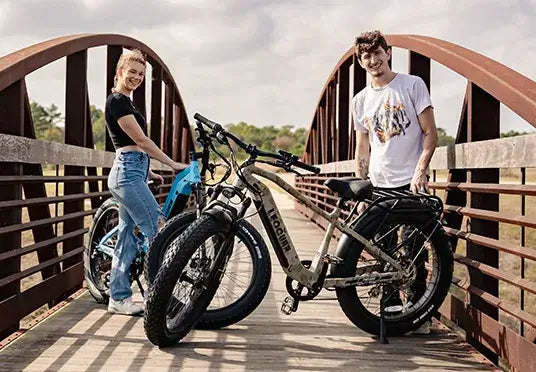
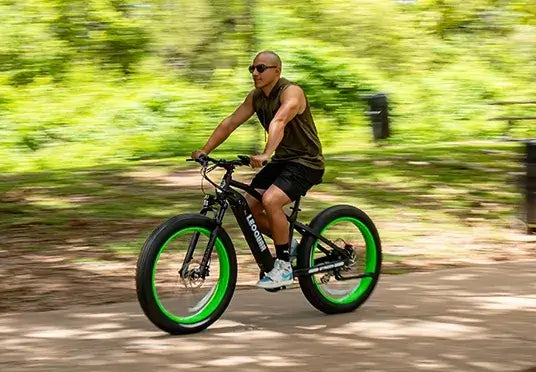
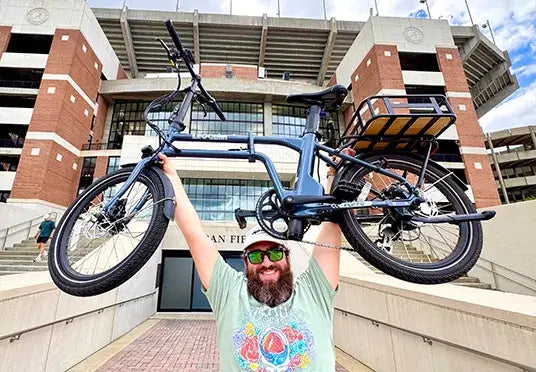
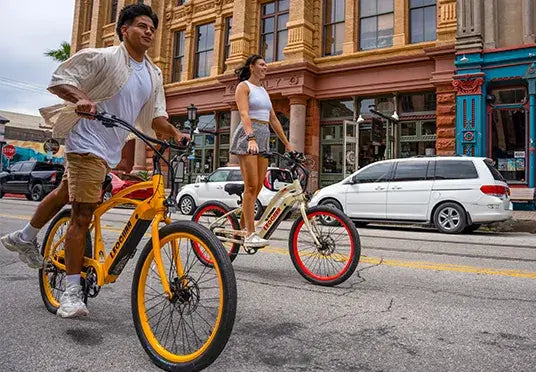
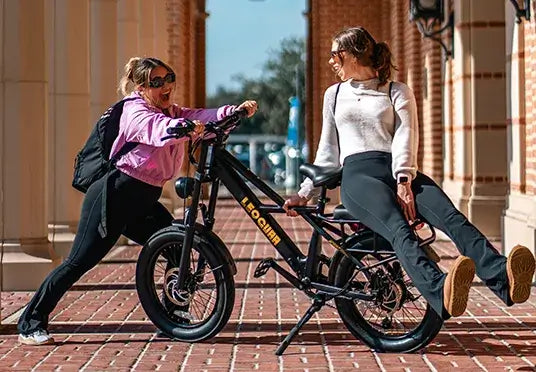
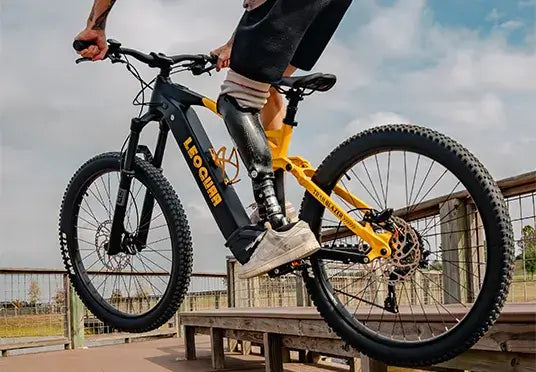
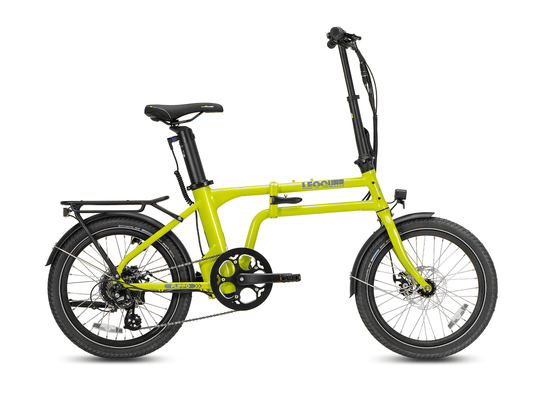
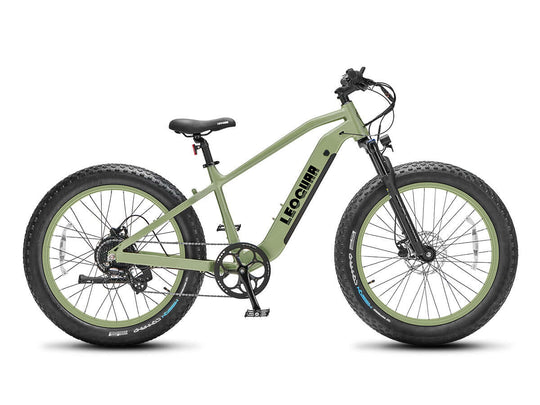
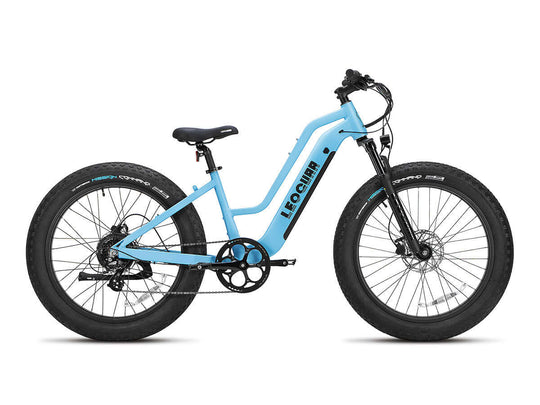
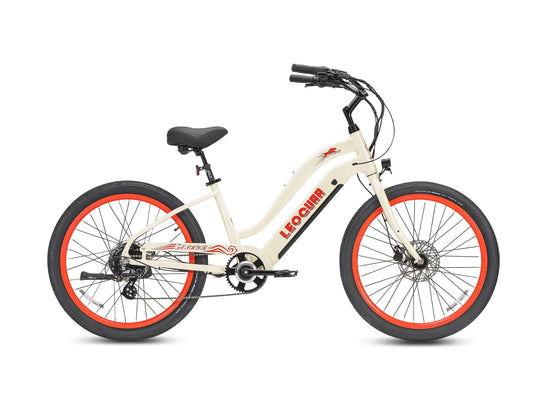
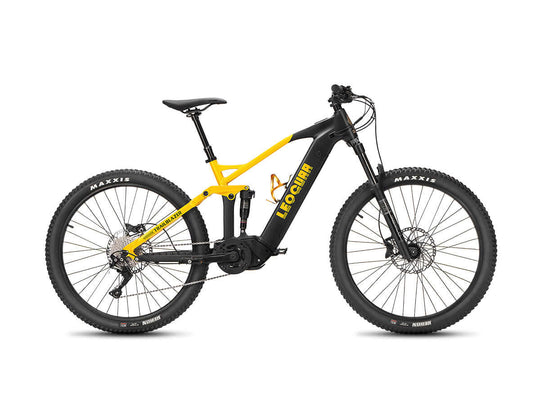
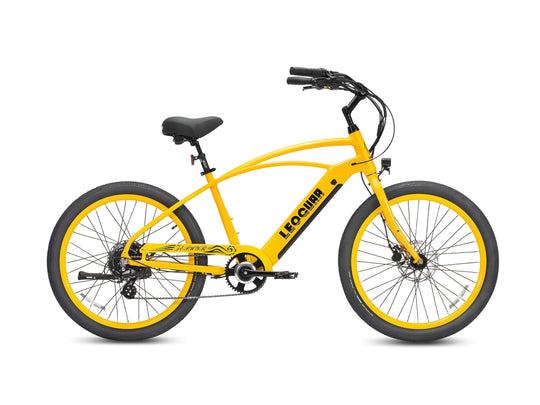
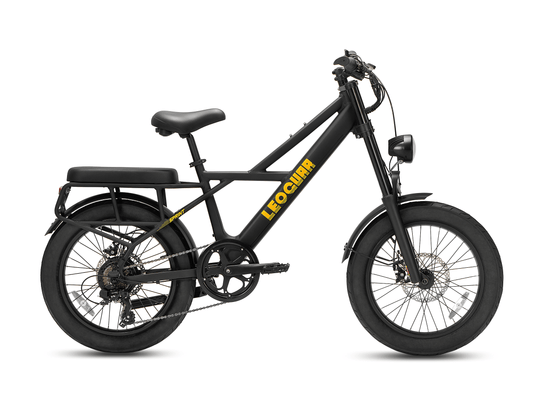
















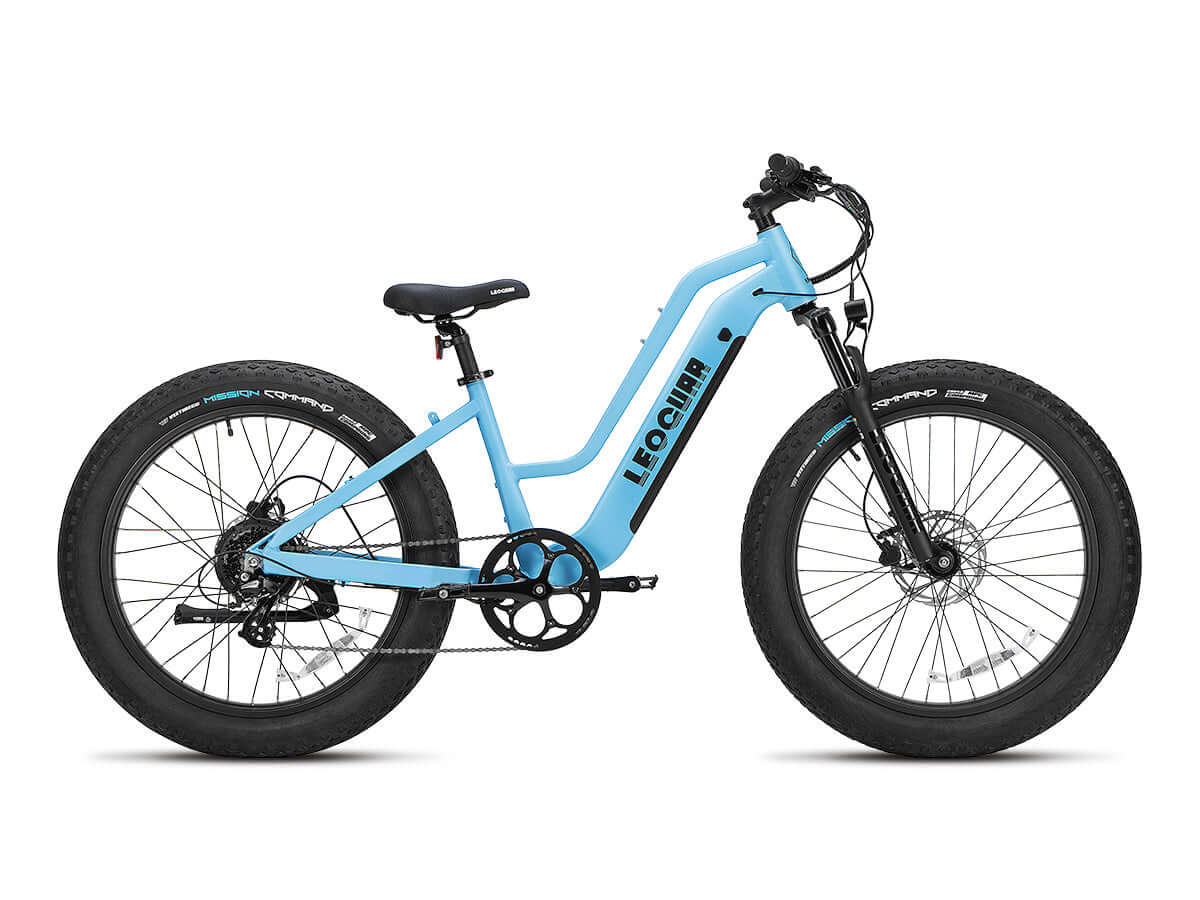








Leave a comment